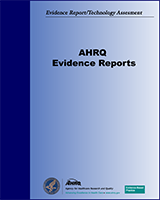NCBI Bookshelf. A service of the National Library of Medicine, National Institutes of Health.
Jadad AR, Boyle M, Cunningham C, et al. Treatment of Attention-Deficit/Hyperactivity Disorder. Rockville (MD): Agency for Healthcare Research and Quality (US); 1999 Nov. (Evidence Reports/Technology Assessments, No. 11.)
This publication is provided for historical reference only and the information may be out of date.
Diagnostic Criteria for Attention-Deficit/Hyperactivity Disorder
- A.
Either (1) or (2):
- Inattention: Six (or more) of the following symptoms of inattention have persisted for at least 6 months to a degree that is maladaptive and inconsistent with developmental level:
- often fails to give close attention to details or makes careless mistakes in schoolwork, work, or other activities
- often has difficulty sustaining attention in tasks or play activities
- often does not seem to listen when spoken to directly
- often does not follow through on instructions and fails to finish schoolwork, chores, or duties in the workplace (not due to oppositional behavior or failure to understand instructions)
- often has difficulties organizing tasks and activities
- often avoids, dislikes, or is reluctant to engage in tasks that require sustained mental effort (such as schoolwork or homework)
- often loses things necessary for tasks or activities (e.g., toys, school assignments, pencils, books, or tools)
- is often easily distracted by extraneous stimuli
- is often forgetful in daily activities
- Hyperactivity-impulsivity. Six (or more) of the following symptoms of hyperactivity-impulsivity have persisted for at least 6 months to a degree that is maladaptive and inconsistent with developmental level: Hyperactivity
- often fidgets with hands or feet or squirms in seat
- often leaves seat in classroom or in other situations in which remaining seated is expected
- often runs about or climbs excessively in situations in which it is inappropriate (in adolescents or adults, may be limited to subjective feelings of restlessness)
- often has difficulty playing or engaging in leisure activities quietly
- is often "on the go" or acts as if "driven by a motor"
- often talks excessively
Impulsivity - often blurts out answers before questions have been completed
- often has difficulty awaiting turn
- often interrupts or intrudes on others (e.g., butts into conversations or games)
- B.
Some hyperactive-impulsive or inattention symptoms that caused impairment were present before age 7 years.
- C.
Some impairment from the symptoms is present in two or more settings (e.g., at school [or work] and at home).
- D.
There must be clear evidence of clinically significant impairment in social, academic, or occupational functioning.
- E.
The symptoms do not occur exclusively during the course of a Pervasive Developmental Disorder, Schizophrenia, or other Psychotic Disorder and are not better accounted for by another mental disorder (e.g., Mood Disorder, Anxiety Disorder, Dissociative Disorder, or a Personality Disorder).
Code based on type
314.01 Combined Type: if both Criteria Al and A2 are met for the past 6 months (ICD-10 F90.0)
314.00 Predominantly Inattentive Type: if Criterion Al is met but Criterion A2 is not met for the past 6 months (ICD-10 F98.8)
314.01 Predominantly Hyperactive-impulsive Type: if Criterion A2 is met but Criterion Al is not met for the past 6 months (ICD-10 F90.0)
314.9 AD/HD NOS: symptoms are prominent but do not quite meet above criteria (ICD-10 F90.9)
CODING NOTE: For individuals (especially adolescents and adults) who currently have symptoms that no longer meet full criteria, "in Partial Remission" should be specified.
From:
Based on information from the Diagnostic and
Statistical Manual of Mental Health Disorders, Fourth Edition. Copyright 1994
American Psychiatric Association
- Appendix A. DSM-IV Criteria for Attention-Deficit/Hyperactivity Disorder from th...Appendix A. DSM-IV Criteria for Attention-Deficit/Hyperactivity Disorder from the American Psychiatric Association - Treatment of Attention-Deficit/Hyperactivity Disorder
- Appendix E: Data Extraction Form for ADHD Studies - Treatment of Attention-Defic...Appendix E: Data Extraction Form for ADHD Studies - Treatment of Attention-Deficit/Hyperactivity Disorder
Your browsing activity is empty.
Activity recording is turned off.
See more...
